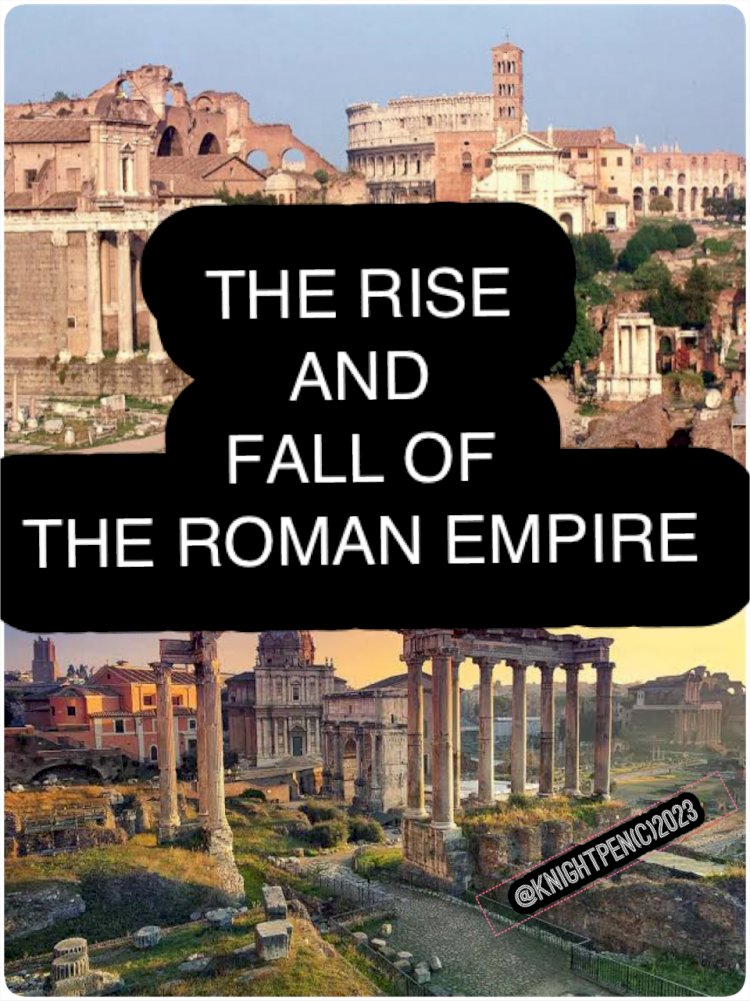AN EPIC JOURNEY THROUGH HISTORY: UNRAVELING THE RISE AND FALL OF THE MIGHTY ROMAN EMPIRE
The content explores the rise and fall of the Roman Empire, tracing its journey from a republic to a vast superpower during the Pax Romana. It highlights key factors such as political stability, cultural achievements, economic challenges, military pressures, and eventual division that led to its decline. Despite its fall, the Roman Empire's legacy endures, shaping the course of Western civilization.

On our weekend memory lane content, we take a look at the Rise and Fall of the Roman Empire: An Epic Journey Through History
The Roman Empire, one of the most powerful and enduring civilizations in history, experienced a remarkable rise and an eventual dramatic fall. Spanning over a millennium, the story of the Roman Empire is a tale of military might, cultural achievements, political intrigue, and societal transformation. This narrative explores the key events and factors that led to both the ascent and the demise of this ancient superpower.
The Rise of Rome (c. 753 BC - 27 BC)
The Foundation of Rome: According to legend, Rome was founded in 753 BC by Romulus and Remus, twin brothers raised by a she-wolf. The city's strategic location on the Italian Peninsula contributed to its early growth.
The Roman Republic: Rome evolved into a republic, characterized by a system of checks and balances, elected officials, and the rule of law. During this period, Rome expanded its territory through military conquests and established a strong civic and legal foundation.
The Pinnacle of Power (27 BC - 180 AD):
The Age of Augustus: Augustus Caesar, the first Emperor of Rome, ushered in a period of relative stability and prosperity known as the Pax Romana (Roman Peace). Rome experienced cultural flourishing, architectural marvels, and significant economic growth.
Roman Achievements: Romans made immense contributions to art, literature, engineering, and governance. The construction of aqueducts, roads, and monumental structures showcased their engineering prowess.
Challenges and Decline (180 AD - 476 AD):
Political Instability: The empire witnessed a series of weak and short-lived emperors, leading to political chaos and frequent civil wars.
Economic Struggles: Economic issues, including high taxation, inflation, and devaluation of currency, strained the empire's resources and eroded the middle class.
Military Pressures: Barbarian invasions, particularly by Germanic tribes and the Hunnic Empire, threatened Roman borders. The Roman army faced challenges in defending the vast territory.
Division and Fall: In 285 AD, the empire was divided into Eastern and Western halves for administrative efficiency. In 476 AD, the Western Roman Empire fell to Odoacer, a Germanic chieftain, marking the traditional date for the end of ancient Rome.
The rise and fall of the Roman Empire offer valuable lessons about the complexities of power, governance, and societal evolution. Despite its eventual collapse, the legacy of Rome endures through its contributions to law, language, governance, and culture, shaping the course of Western civilization for centuries to come. The story of Rome remains a testament to the heights human achievement can reach and a cautionary tale about the challenges that come with maintaining a vast and diverse empire.
You Can Also Read














